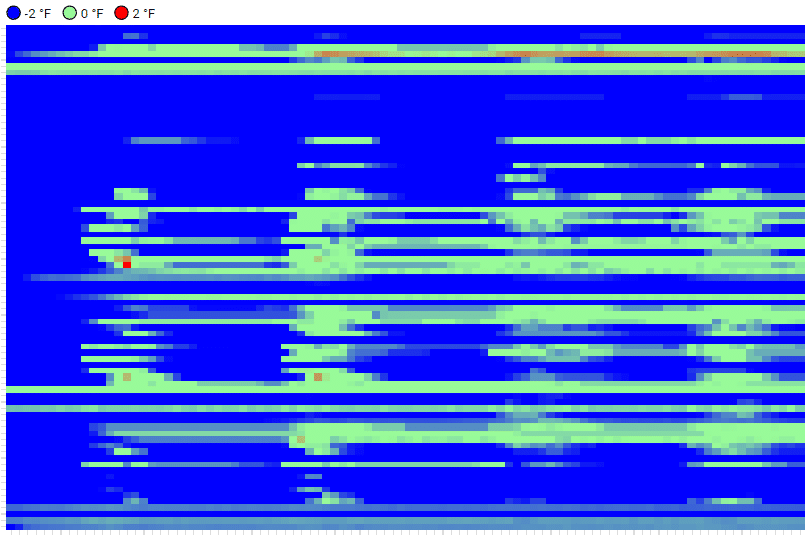A big focus for maintenance staff is minimizing complaints to relieve occupant discomfort. People who are consistently too hot or too cold make it known and we’ve seen many buildings where the entire building operation was off kilter due to the needs of a few, or to prevent complaints on a few days out of the year. Preventing those problems sometimes necessitates looking at control sequences and detailed VAV operation for dozens, if not hundreds of system components – like VAV boxes. Modern BMS systems allow you to collect historical data for all those systems. But with all this data, how can you make sense of it?
We’re finding that SkySpark is an excellent tool for helping diagnose underlying problems in buildings, rather than just “treating the symptoms”. Here’s a recent example from one of our client’s buildings.
Floor layouts like the one above are common in building management systems, and they allow operators to identify problem zones. However, they show only a snapshot of zone conditions and don’t make it particularly easy to correlate zone issues with air handling unit issues. Instead we need to look at trends of multiple relevant conditions over time for a given system, on the same time scale, like this:

This screenshot shows an app we created to answer the question: how are the zones responding to a given air handler’s supply air temperature over a given period? It shows the AHU’s supply air temperature (blue line in the top graph) and temperature setpoint (the red line, top graph), the outside air temperature (green), the return air damper (green line lower graph) and valve positions (red and blue lines, lower graph), and a summary of temperature conditions at all the zones served by the AHU (middle graph). The app counts and displays how many zones have temperatures above their cooling setpoint (red line, middle graph) or below their heating setpoint (blue line, middle graph). At a glance at the top graph, we can now see that this AHU’s supply air temperature setpoint barely resets upward even when it’s cold outside, and even when most of the zones (between 50% and 95%) are too cold.
While this graph is a lot of fun for an engineer, it’s hard for many people to interpret. Another way to visualize similar data, and one that most building engineers will find easier to read is a heat map like this one generated in SkySpark:

The heat map above shows data related to the same AHU as before, over the same period. The question this app answers is: what specific zones are too cold or too warm, and how often? In this case, it again makes clear that most of the zones are too cold most of the time (blue), and we can easily single out the one zone that is often too warm (red bar near the top), despite all the other zones being too cold.
In the case of this example AHU, we decided that because so many zones were not able to maintain their heating setpoints (despite having reheat coils) we could modify the AHU’s supply air temperature setpoint algorithm (i.e. its reset) to obtain warmer supply air temperatures most of the time and make better use of the economizer. The same app now allows us to monitor the results and adjust the new algorithm over time to maintain better conditions in most of the zones.

After the supply air temperature setpoint algorithm was changed on day 5, we immediately saw a net improvement. On average, 20 more zones are now meeting their zone air temperature setpoints. A few zones became too warm and using the SkySpark graph above we were able to pinpoint and investigate them (red lines). In a few cases we found leaky reheat valves which we are now repairing.
So don’t let mountains of BMS data hide the real issues in your building. Leveraging available tools like SkySpark during this simple investigation quickly led to a more comfortable building, where the occupants are likely more productive, the building engineer has fewer complaints, the energy bills are lower, and our carbon footprint is reduced. That’s a real win in our book. If you would like help improving your building’s occupant comfort and saving energy, contact us anytime.
Like this post? Share it on LinkedIn.


